TARBP2-Enhanced Resistance during Tamoxifen Treatment in Breast Cancer
- PMID: 30759864
- PMCID: PMC6406945
- DOI: 10.3390/cancers11020210
TARBP2-Enhanced Resistance during Tamoxifen Treatment in Breast Cancer
Abstract
Tamoxifen is the most widely used hormone therapy in estrogen receptor-positive (ER+) breast cancer, which accounts for approximately 70% of all breast cancers. Although patients who receive tamoxifen therapy benefit with respect to an improved overall prognosis, resistance and cancer recurrence still occur and remain important clinical challenges. A recent study identified TAR (HIV-1) RNA binding protein 2 (TARBP2) as an oncogene that promotes breast cancer metastasis. In this study, we showed that TARBP2 is overexpressed in hormone therapy-resistant cells and breast cancer tissues, where it enhances tamoxifen resistance. Tamoxifen-induced TARBP2 expression results in the desensitization of ER+ breast cancer cells. Mechanistically, tamoxifen post-transcriptionally stabilizes TARBP2 protein through the downregulation of Merlin, a TARBP2-interacting protein known to enhance its proteasomal degradation. Tamoxifen-induced TARBP2 further stabilizes SOX2 protein to enhance desensitization of breast cancer cells to tamoxifen, while similar to TARBP2, its induction in cancer cells was also observed in metastatic tumor cells. Our results indicate that the TARBP2-SOX2 pathway is upregulated by tamoxifen-mediated Merlin downregulation, which subsequently induces tamoxifen resistance in ER+ breast cancer.
Keywords: SOX2; TARBP2; hormone therapy; merlin; tamoxifen.
Conflict of interest statement
The authors declare no conflict of interest.
Figures
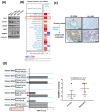
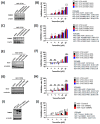
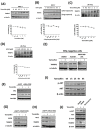
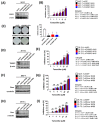
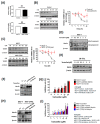
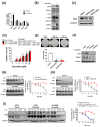
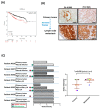

Similar articles
-
Metastasis-suppressor transcript destabilization through TARBP2 binding of mRNA hairpins.Nature. 2014 Sep 11;513(7517):256-60. doi: 10.1038/nature13466. Epub 2014 Jul 9. Nature. 2014. PMID: 25043050 Free PMC article.
-
Role of RBP2-Induced ER and IGF1R-ErbB Signaling in Tamoxifen Resistance in Breast Cancer.J Natl Cancer Inst. 2018 Apr 1;110(4). doi: 10.1093/jnci/djx207. J Natl Cancer Inst. 2018. PMID: 29028222
-
Combined histone deacetylase inhibition and tamoxifen induces apoptosis in tamoxifen-resistant breast cancer models, by reversing Bcl-2 overexpression.Breast Cancer Res. 2015 Feb 25;17(1):26. doi: 10.1186/s13058-015-0533-z. Breast Cancer Res. 2015. PMID: 25848915 Free PMC article.
-
Overview of resistance to systemic therapy in patients with breast cancer.Adv Exp Med Biol. 2007;608:1-22. doi: 10.1007/978-0-387-74039-3_1. Adv Exp Med Biol. 2007. PMID: 17993229 Review.
-
Fulvestrant: a review of its use in hormone receptor-positive metastatic breast cancer in postmenopausal women with disease progression following antiestrogen therapy.Drugs. 2004;64(6):633-48. doi: 10.2165/00003495-200464060-00009. Drugs. 2004. PMID: 15018596 Review.
Cited by
-
LINC01526 Promotes Proliferation and Metastasis of Gastric Cancer by Interacting with TARBP2 to Induce GNG7 mRNA Decay.Cancers (Basel). 2022 Oct 9;14(19):4940. doi: 10.3390/cancers14194940. Cancers (Basel). 2022. PMID: 36230863 Free PMC article.
-
TRBP2, a Major Component of the RNAi Machinery, Is Subjected to Cell Cycle-Dependent Regulation in Human Cancer Cells of Diverse Tissue Origin.Cancers (Basel). 2024 Nov 1;16(21):3701. doi: 10.3390/cancers16213701. Cancers (Basel). 2024. PMID: 39518139 Free PMC article.
-
TARBP2 promotes tumor angiogenesis and metastasis by destabilizing antiangiogenic factor mRNAs.Cancer Sci. 2021 Mar;112(3):1289-1299. doi: 10.1111/cas.14820. Epub 2021 Feb 12. Cancer Sci. 2021. PMID: 33484209 Free PMC article.
-
Hybrid 18F-FDG-PET/MRI Measurement of Standardized Uptake Value Coupled with Yin Yang 1 Signature in Metastatic Breast Cancer. A Preliminary Study.Cancers (Basel). 2019 Sep 26;11(10):1444. doi: 10.3390/cancers11101444. Cancers (Basel). 2019. PMID: 31561604 Free PMC article.
-
Novel roles of RNA-binding proteins in drug resistance of breast cancer: from molecular biology to targeting therapeutics.Cell Death Discov. 2023 Feb 9;9(1):52. doi: 10.1038/s41420-023-01352-x. Cell Death Discov. 2023. PMID: 36759501 Free PMC article. Review.
References
Grants and funding
LinkOut - more resources
Full Text Sources

